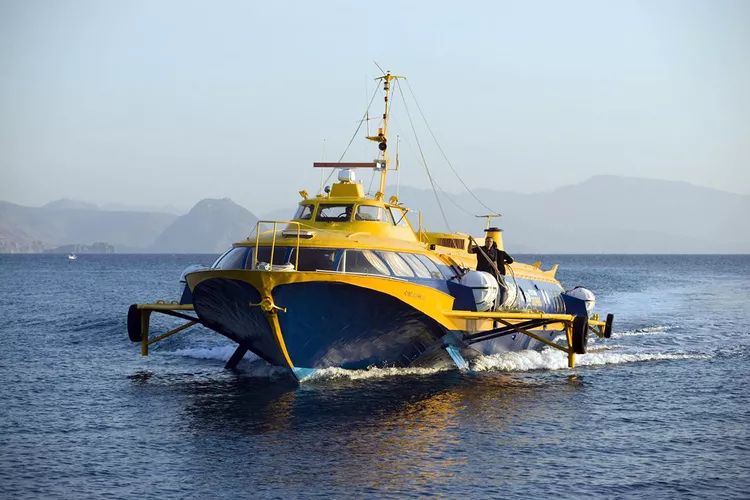1. Introduction to Hydrofoils in the Aegean
2. Travel Tips for Using Hydrofoils
3. Onboard Amenities and Experience
4. Conclusion: Why Choose Hydrofoils
A Fast and Fun Way to Get Going in the Aegean
Before the arrival of water-skipping hydrofoils on the choppy waters of the Aegean, travel between islands was a time-consuming, stomach-churning experience. However, these modern vessels now cut travel time and usually provide a smooth trip.
1. Introduction to Hydrofoils in the Aegean
The hydrofoil lines depart from the port of Zea, part of Piraeus near Athens, and Raphia/Rafina, a short trip from Athens. Please note that hydrofoils and catamarans typically do not run in late fall or winter.
2. Travel Tips for Using Hydrofoils
Generally, the pace of life in Greece is languid, with few people, other than the occasional taxi driver, pushing the clock. Nevertheless, the hydrofoils are exceptions. These swift ships depart promptly, and on two occasions that I experienced, a bit ahead of schedule. Therefore, it is wise to arrive at least 30 minutes early, and make reservations in advance when possible. In the event of rough weather, the hydrofoils may be cancelled. The last ship allowed to travel that day faced challenging conditions—hydrofoil lines strive to maintain their reputation for smooth travel, but when Poseidon gets frisky, adjustments may be necessary.
If you are travelling Greece with luggage, the hydrofoils offer minimal accommodation. Expect to handle your own bags, as crowded voyages often lead to baggage stuffed in every corner, which poses another hazard if the journey gets a bit rough.
3. Onboard Amenities and Experience
For those prone to seasickness, please be aware that these journeys are not always glass-smooth, especially on the smaller hydrofoils. Rough water will make itself felt. You may want to avoid sitting in the forward cabin of the vessel on the older yellow Ceres vessels, particularly during late spring, early autumn, and whenever storms are nearby. Staying inside the broad, flat rear cabin is recommended.
The outside areas of the hydrofoil are very tempting for photography enthusiasts. However, once the ship reaches full speed, you may be at risk if you remain outside. Even when the water is relatively calm, the wind can be surprisingly strong. I spent a chilly half-hour outside, thinking I couldn’t make it back into the cabin one-handed—if I let go of my camera, the wind or jolting from high waves would likely slam it into the steel sides of the ship. Ultimately, I dashed back through the open door just in time to avoid being thrown into the baggage hold.
The reward for these efforts is the delightful sensation of flying over water, reminiscent of some semi-divine mythical personage. The nickname “Flying Dolphin” is well-earned.
Larger hydrofoils offer various amenities, including full bars and in-flight movies. On a journey from Rafina to Mykonos, the film “The Big Blue” was screened, presenting many scenes of hydrofoil travel. It was surreal to glance at the monitor showing speeding water, then look out the windows and see the same speeding water; fantasy and reality seemed to intertwine seamlessly in Greece.
4. Conclusion: Why Choose Hydrofoils
Hydrofoils present an efficient and enjoyable way to maximize your time in Greece, allowing you to spend time on the delightful islands rather than on the deck of a slower ferry. With the increased competition from hydrofoils, ferries have upgraded and are faster than ever, but nothing can truly match the hydrofoils unless you opt to leave the water entirely for air travel.





